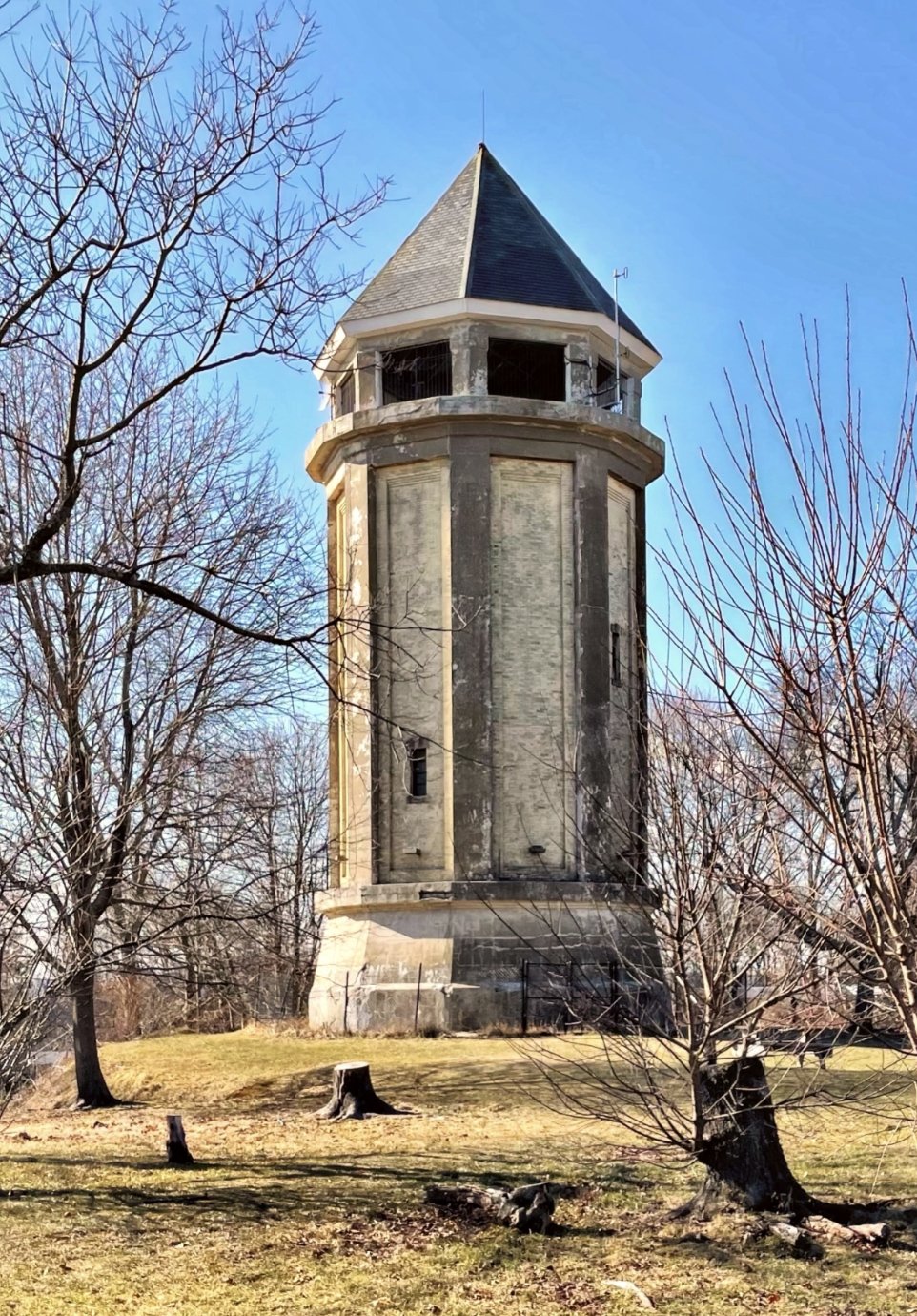Town asks HRA for $150K to close funding gap for Fort Revere tower restoration
/By Dolores Sauca Lorusso
The town manager has formally requested that the Hull Redevelopment Authority contribute $150,000 to restore the historic Fort Revere water tower, and will meet with the authority next week to discuss the cost-gap funding with the authority.
The project was first put out to bid in early 2023, and estimates for the work were higher than available funds, leading the town to request additional funding at special town meeting in fall 2023. The additional money was not approved.
Town Manager Jennifer Constable and Town Planner Chris DiIorio will meet in person with the HRA at the Memorial Middle School on Monday, June 17.
After years of deterioration, the crumbling structure, which offers sweeping views of Boston Harbor from its observation deck, was ordered closed by the town the winter of 2012 after an engineer advised that it was no longer safe for visitors to climb.
In their letter to the HRA requesting funding for the tower project, Constable and DiIorio said “the community has been active in advocating for the tower to be revitalized for years and is excited to have it restored to its original condition.”
The Fort Revere water tower is included on the National and State Register of Historic Places and is located on one of the points of the star-shaped Fort Independence (1778) and dates from 1903. It is the earliest known use of reinforced concrete for a water tower in the nation.
The initial estimate for the rehabilitation of the tower ranged from $1.5 to $1.7 million. The May 2022 town meeting approved $2.2 million for the project. In the meantime, the cost – reflected in the three latest bids – had increased to an estimated $2.5 to $3 million.
The project scope was revised and put out to bid for a second time in early 2024, and the low bid received in March was $2.35 million, leaving the $150,000 gap in funding being requested of the HRA.
The tower rehabilitation includes concrete and masonry repairs, replacement of existing concrete observation platform, restoration of existing windows, replacement of existing concrete stairs with new metal stairs, replacement of existing interior and exterior lighting, replacement of existing slate roofing; new high performance coatings of exterior walls, and new traffic coating on observation deck, new exterior ornamental fence around tower base, and replacement of concrete sidewalks.
Gisela Voss, of Hampton Circle suggested that the HRA do something creative to raise funds for the water tower project, like matching dollar-for-dollar whatever is raised up to $150,000.
Voss also was interested to learn if the $2.3 million includes any set-aside funds, such as 10% of the total, for maintenance and upkeep. In addition, she expressed the desire to find out the state’s plans for the property and how they work with the town’s plans. The Department of Conservation and Recreation owns some of the bunkers, while the town owns other parts of the property, including the tower.
At its meeting on June 3, HRA members compiled a list of questions to send to Constable and DiIorio in advance of June 17 so they would be prepared with the answers. The hope is the board would be able to vote on whether to provide the funding to the tower rehabilitation at their meeting on Monday night at 6 p.m.
HRA Chair Dennis Zaia said he was interested in the bigger picture for the tower, and wants to know whether the town is seeking funding besides Community Preservation Act money.
“What doesn’t get done if they don’t raise the other $150,000 for the project; does it kill the project?” HRA member Bartley Kelly asked. “I am all for preserving things, but what is the end game…I want to be a good steward of the HRA money and the town. It is a double-edged sword because the town did vote to preserve it and a lot of people want to spend the money. If we cut the $150,000, where does that leave us?”
HRA member Joan Senatore said at special town meeting in August 2023, DiIorio was asked about whether the town sought other grant money. Senatore said from her memory DiIorio said there wasn’t much out there; “it was like $100,000.”
“If there was $100,000 out there and they got it, that would reduce it to $50,000. I think we would be more of a partner if they exhausted other grant monies and not just expect us to foot the whole $150,000 gap,” said Senatore. “What changed the scope, what are we getting for the 2.3? If we don’t give them the $150,000, does it kill the project, or slice off one of the pieces of the scope of the work?”
The HRA’s Dan Kernan asked about whether timing was a factor in the town’s request.
“What is the goal? Are they going to fix it up and continue to have funding to maintain it and keep it…what are they thinking of doing with it, because I think that is a big part of whether we (HRA) support it or not,” said Kernan. “The whole town should know what they want to do with it.”
“This current requested donation for $150,000 will be applied toward actual construction repairs to the tower, which will assist Hull to meet its legal obligation as the owner of the tower,” said Patrick Finn, who lives near the fort and supports its restoration. “We have been trying to prioritize this project for years. We’re responsible for it. Let’s fix it. It’s worth every penny. Not doing so would open the town p to liability.”
“I love this conversation, because I think it is incredibly relevant because in my historical commission hat, we have begun to look at this in a townwide perspective.,” said Hull Historical Commission member Steven Greenberg. “Tonight, I was just working with a list of the 25 of the most historic sites in the town because there are many sites and many of them are in disrepair and will require money.”
“It was very exciting at town meeting to hear [the] town manager talk about a capital stabilization fund. Most importantly I think that the HRA might be the one that rescues this at this time but could also be the one that initiates the long-term planning and the incentive to move us forward as a community, not just as a reactive community, but as a proactive community… to do a comprehensive look at all of this,” Greenberg said.
Like what you’re reading? Stay informed with a Hull Times subscription by clicking here.
Do you have an opinion to share? Click here to write a Letter to the Editor.























